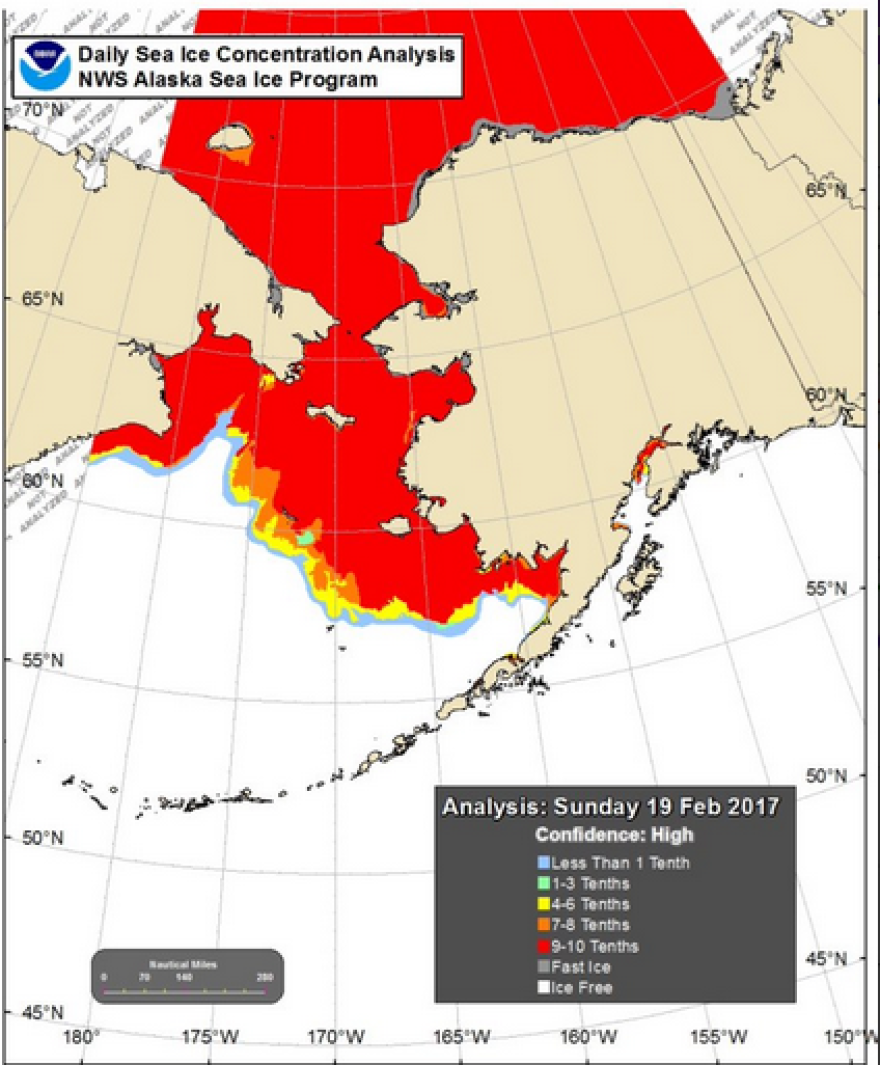The ebb and flow of Arctic sea ice …
National Weather Service climate specialist Rick Thoman has talked a lot about sparse sea-ice formation in many areas around the circumpolar north this winter. So he may have raised a few eyebrows last Monday when he tweeted that ice cover in waters off southwest Alaska had significantly expanded.
“Over the last week or so, we’ve seen a fairly dramatic increase in the extent of ice across the central Bering Sea,” he said.

Thoman says that doesn’t mean there’s been a change in the trend set in recent years of steadily decreasing winter Arctic sea-ice cover. Instead, he says, it’s simply because the area has cooled, and winds out of the north have pushed ice southward into the Bering Sea.
“A combination of the cooling sea-surface temperatures – to be expected this time of year; sustained colder weather, which we haven’t had much of until really this week; and those northerly winds, all coming together to expand the sea-ice extent.”
So, Thoman says, the sea-ice uptick is more of a statistical hiccup than a departure from this winter’s consistently below-average Arctic sea-ice cover, based on more than three decades of observations.

“It’s still certainly below the average – the multi-decadal average,” he said.
The extent of Bering Sea ice cover this year has so far exceeded that of the previous two years, he added, because the extraordinary and record-setting low sea-ice formation of the past two winters mainly were due to a couple of short-term factors: a strong El Nino and an unusually persistent warm-water mass in the north Pacific commonly called “The Blob.”
“The last couple of years has been so low with ice coverage that this year looks good in comparison to that, but doesn’t look so good in comparison to the multi-decade average.”
Thoman says it’s not unusual for Bering Sea ice to ebb and flow this time of year, mainly due to weather that’s set in over the region. He says a strong storm forecast to move in from the south over the weekend will bring warmer temperatures and high winds that’ll likely scatter the ice and push it north.
He says this winter may not set a new record low sea-ice extent for a third consecutive year. But that it almost certainly will rank among the lowest winter sea-ice extents on record. And it will continue the trend of ever-decreasing sea-ice formation that’s been ongoing for more than a decade now.



